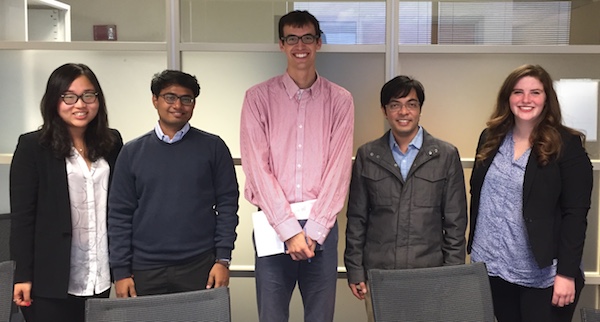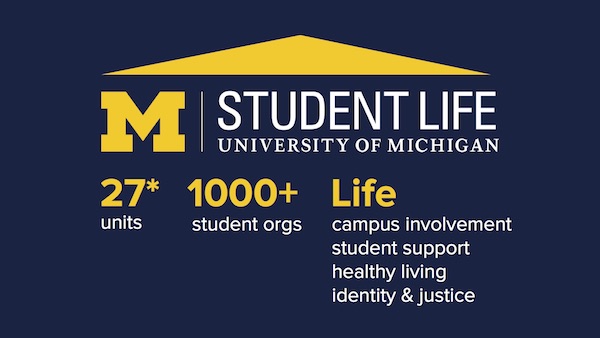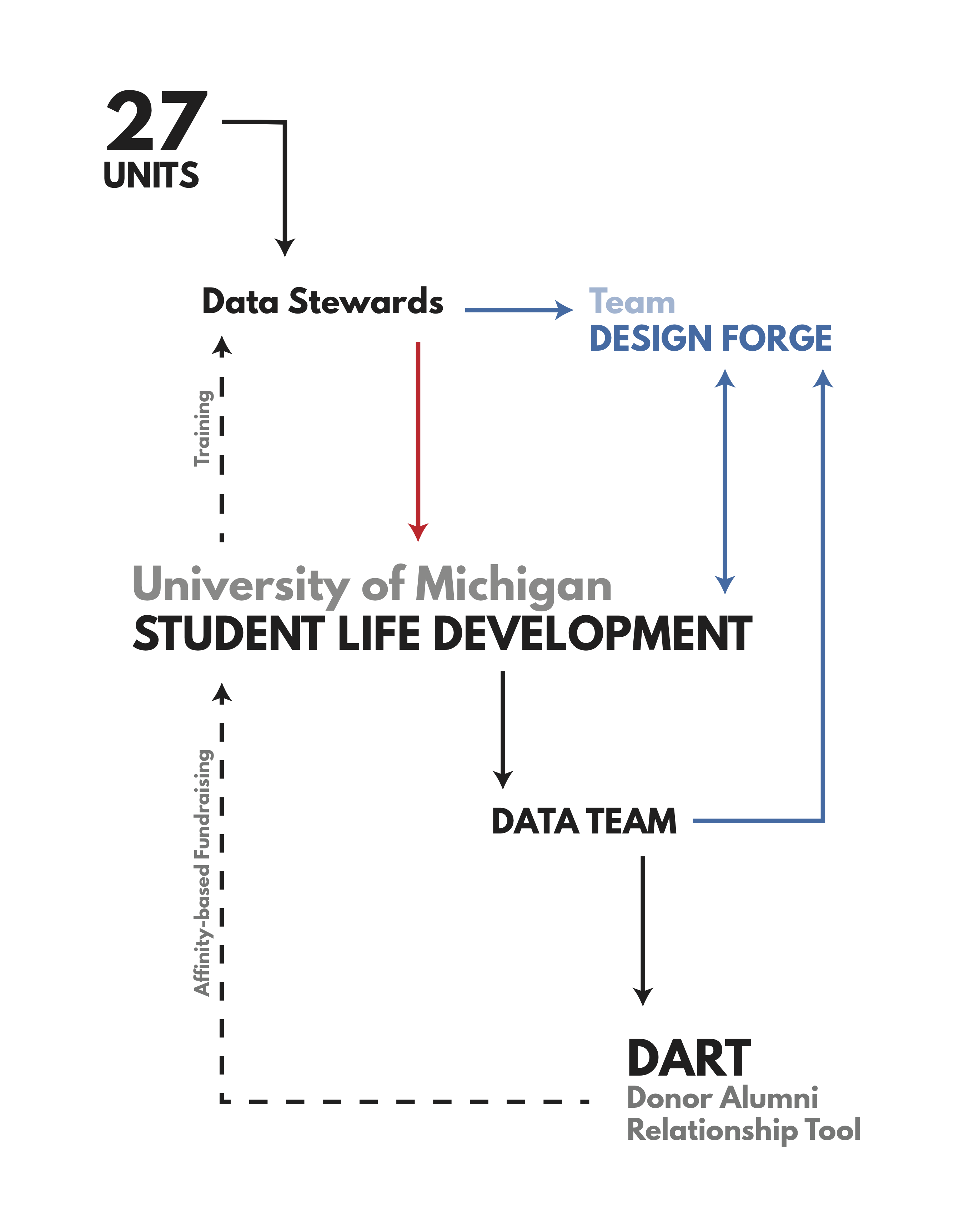Identifying data collection bottlenecks at the department of Student Life, University of Michigan
Project Scope: Research, Report, Presentation
Team Name: Design Forge
My Role: UX Researcher
With 27 units and over a 1000 student organizations, Student Life is an umbrella organization that helps students have a fulfilling experience during their time at the university. Most of their programs and events depend on donations, and that’s where Student Life uses data to identify potential donors based on their interests. We were tasked to identify the bottlenecks in data collection by Student Life units. From our process, we identified several problems at each stakeholder level and our primary recommendation was to improve transparency and collaboration across stakeholders.
-
Meet the client
In this first meeting we learned more about the stakeholders and identified the scope of this project. Student Life's Development office uses a tool called DART (Donor Alumni Relationship Tool) to identify potential donors based on data, with the aim to improve fund-raising based on donor interests.
To use this tool effectively, data about student activities needs to be collected and uploaded into the system. This data collection is done by the 27 units which are part of Student Life organization. However, this data is highly inconsistent and some units have a significant backlog of missing data. Our goal was to identify the problems with the data collection efforts.

-
Background Research
Before conducting interviews, our team performed background research and literature review to answer these four broad questions:- What is Student Life at the University of Michigan?
- What is Affinity-based Fundraising?
- What are the general problems encountered during data collection?
- What are the best practices for data collection?
I worked on answering the first question, by learning more about the goals of Student Life, its history, its organization structure and leadership, its sub-units, past and current fund-raising campaigns, and its relationship with the Data Management Team.

This research concluded that, Student Life at the University of Michigan is a large organization with numerous sub-units totally having over a thousand full-time employees as well as part-time student workers. Each unit has different funding requirements depending on its size, activities, facilities and other sources of funds.
Although funding campaigns prioritize on specific funds, donors are free to choose any fund, and most donors will choose the one they identify with. Tis could potentially lead to an imbalance in available funds across different units, and at least some units might remain underfunded. The data collected from the units and later available in DART through the efforts of the Data Management Team, can be used to direct a donor to gift to other funds that they might identify with and which are short of funds.
The University of Michigan, Student Life and its units, Students, Donors, and the Data Management Team are all important stakeholders in the smooth functioning of affinity-based fundraising efforts. Missing data from various units of Student Life will likely lead to a less effective campaign and imbalance in funds available for these units. This background information could also hint at why some units are more consistent than others in providing their data.
-
Interviews & Interpretations
We conducted 60-90 minute interviews with 5 stakeholders to understand their problems and points of view. Each side had a different story. Being amateur researchers, we felt our empathy shifting from one stakeholder to the next after each interview. But, by the end of the 5th interview, it was clear that the problem was bigger than holding someone accountable. It was interesting to understand how this part of the university worked and how the cogs of fund-raising system benefited the students in need. -
Affinity Wall
The most demanding, yet exhilarating task was making the Affinity Wall. We hand picked over 400 notes from our interpretation of interviews and went about making sense of the situation. As we grouped related content, we could see patterns emerging that we had not anticipated. Not only the flow of information became much clearer, we could also see that the problem in its simplest form was related to lack of transparency and collaboration.
-
Brainstorming
Once we identified the overarching problem, we decided to visualize the map of information flow and how we can structure our brainstorming session around it. We were still not fed up of using stickies, and quickly came up with several primary as well as secondary recommendations for each stakeholder.

-
Final Report
Contains all findings and recommendations. Read Full Report. -
Presentation
For the client organization